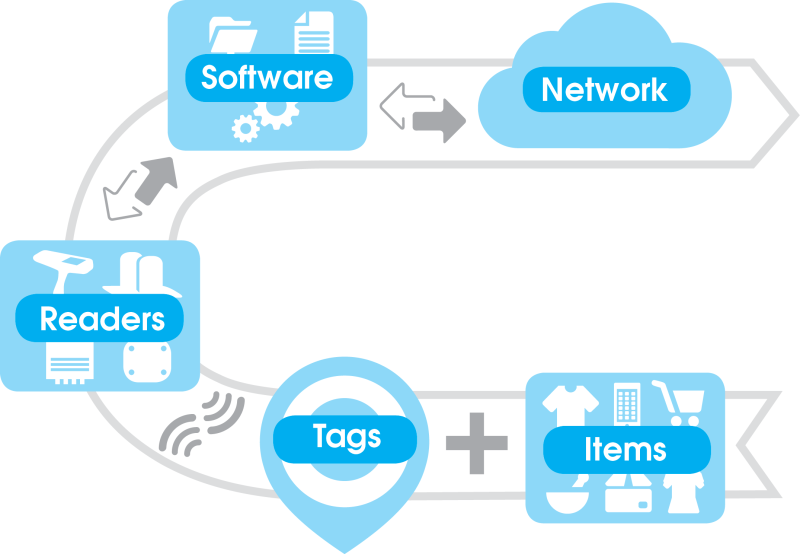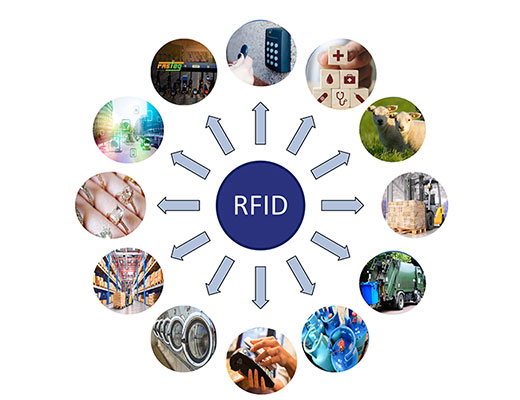
Radio frequency identification (RFID) technology is a radio wave based communication between an RFID reader and an electronic tag attached to an object or person for the purpose of identification and tracking.
RFID technology is being deployed across various industries and opening up new possibilities for AIDC (Automatic Identification and Data Capture) technologies.

RFID is a means of identifying and tracking objects using radio frequency transmission. The dominant frequencies for item-level tagging are 125 & 134 kHz (LF), 13.56 MHz (HF) and 800-900 MHz (UHF).
An RFID tag (or transponder), made of an IC chip attached to a tiny radio antenna, contains information (unique chip id, serial number and other data) related to the item it is affixed to or embedded into. In proximity to an RFID-enabled scanner (or reader), the tag information is read automatically and managed into a user database.

The primary benefit of RFID tags over barcodes is the fact that information stored on multiple RFID tags can be read simultaneously and automatically, while barcodes must be optically visible and scanned manually one-by-one.
RFID tags can be read or written to at distances of up to several feet, while in motion, in any orientation, through intervening objects, and without the need for line-of-sight.
| RFID | Barcode | |
|---|---|---|
Read rate |
High throughput. Multiple(>100) tags can be read simultaneously |
Very low throughput. Tags can only be read manually, one at a time |
Line of Sight |
Not required. As long as items are in the read range of reader or antenna, they will be read and direct line of sight is not required |
Required. Scanner must physically see each item directly to scan, and items must be oriented in a very specific manner |
Human Capital |
Low. Once up and running, the system can be completely automated or requires low human intervention. |
Large requirements. Each item must be scanned individually and manually to get correct orientation of bar code and scanner. |
Read/Write Capability |
More than just reading. Ability to read, write, modify and update |
Read only. Ability to read items and nothing else. |
Durability |
High. Much better protected, and can even be internally attached to items and read without being visible. |
Low. Easily damaged or removed; cannot be read if dirty or greasy or not in line of sight. |
Security |
High. Difficult to replicate. Data can be encrypted, password protected , or include a “kill” feature to remove data permanently, so information stored is much more secure. |
Low. Much easier to reproduce or counterfeit. |
Event Triggering |
Can be used to trigger certain events(like door openings, alarms etc.) |
Not capable. Cannot be used to trigger events |
1RFID systems can offer a business many benefits ranging from better tracking of work in process to speeding up throughput in a warehouse.
2When a business has pain points, such as asset tracking and visibility issues, RFID technology can enable an organization to have automatic visualization of objects with no line of sight or human intervention.
3The use of RFID technology can benefit a business through reduced administrative errors, labor costs associated with scanning bar codes, internal theft, errors in shipping goods and more efficient inventory levels.
4RFID systems can be used just about anywhere, from clothing tags to missiles to pet animals to pharmaceuticals – anywhere that a unique identification system is needed.
